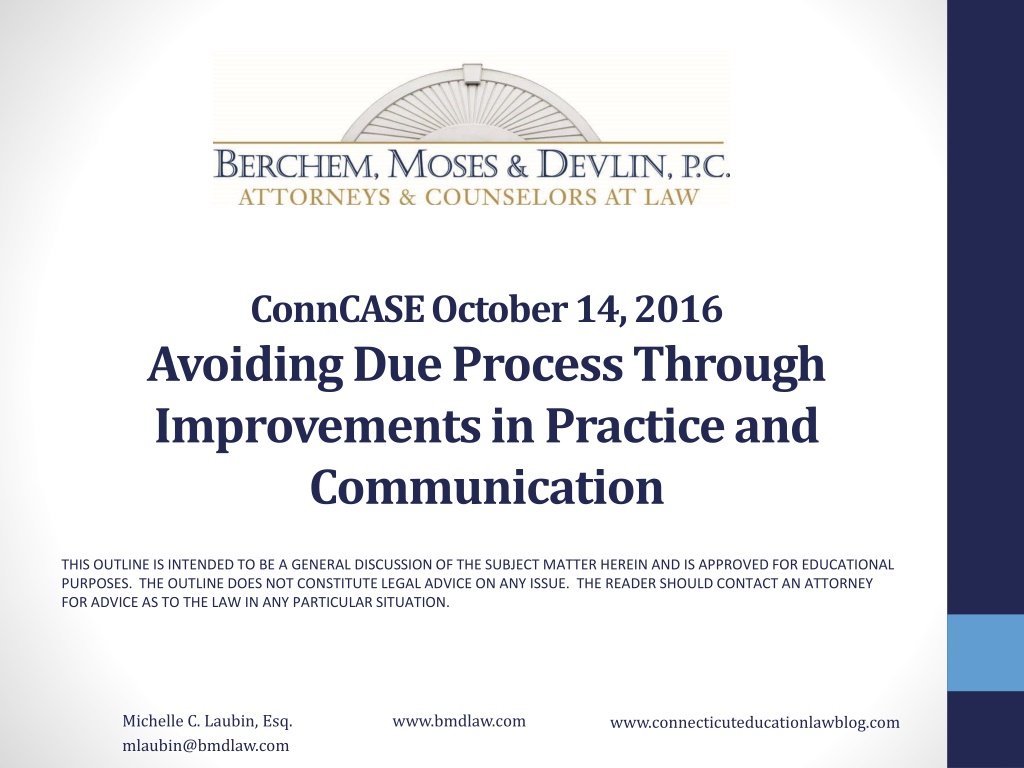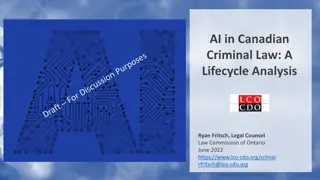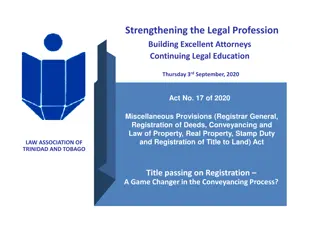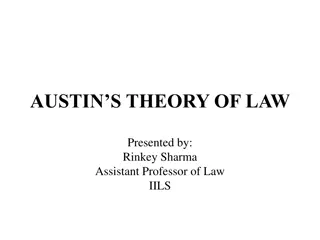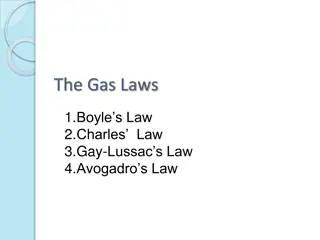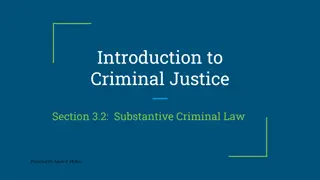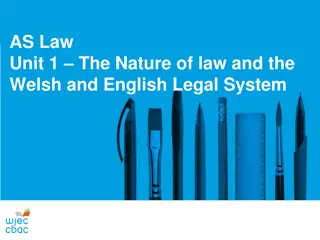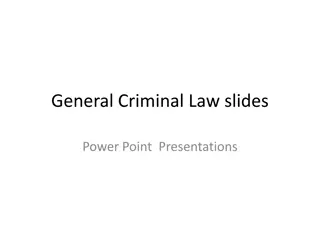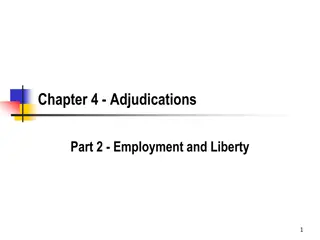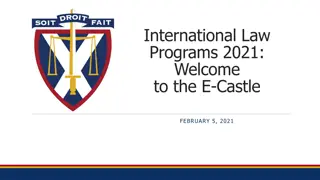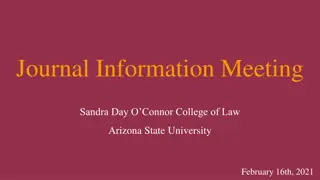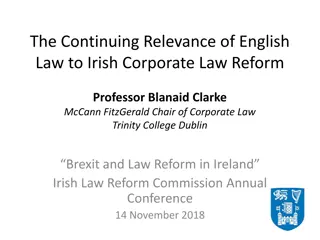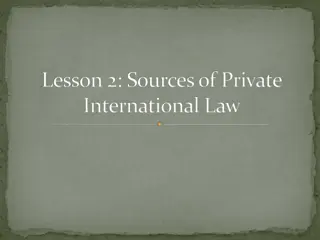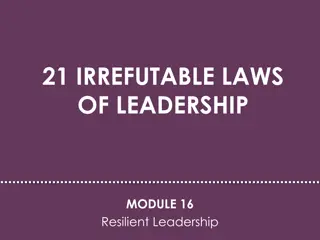Improving Due Process in Education Law
Discusses the significance of measuring student progress for those with disabilities, examining legal cases where districts failed to assess and track progress adequately. Emphasizes the legal framework, including the requirement for Individualized Education Programs (IEPs) to promote meaningful advancement. Presented by legal professionals from BERCHEM, MOSES & DEVLIN, P.C.
Download Presentation

Please find below an Image/Link to download the presentation.
The content on the website is provided AS IS for your information and personal use only. It may not be sold, licensed, or shared on other websites without obtaining consent from the author.If you encounter any issues during the download, it is possible that the publisher has removed the file from their server.
You are allowed to download the files provided on this website for personal or commercial use, subject to the condition that they are used lawfully. All files are the property of their respective owners.
The content on the website is provided AS IS for your information and personal use only. It may not be sold, licensed, or shared on other websites without obtaining consent from the author.
E N D
Presentation Transcript
ConnCASEOctober 14, 2016 Avoiding Due Process Through Improvements in Practice and Communication THIS OUTLINE IS INTENDED TO BE A GENERAL DISCUSSION OF THE SUBJECT MATTER HEREIN AND IS APPROVED FOR EDUCATIONAL PURPOSES. THE OUTLINE DOES NOT CONSTITUTE LEGAL ADVICE ON ANY ISSUE. THE READER SHOULD CONTACT AN ATTORNEY FOR ADVICE AS TO THE LAW IN ANY PARTICULAR SITUATION. Michelle C. Laubin, Esq. mlaubin@bmdlaw.com www.bmdlaw.com www.connecticuteducationlawblog.com
Presented By: Michelle C. Laubin, Esq. Christine A. Sullivan, Esq. BERCHEM, MOSES & DEVLIN, P.C. Attorneys & Counselors At Law 75 Broad Street Milford, CT 06460 (203) 783-1200 1221 Post Road East Westport, CT 06880 (203) 227-9545 9 Morgan Avenue Norwalk, CT 06851 (203) 853-7997
Why Does It Matter? EXAMINING THE LEGAL FRAMEWORK
State DOE Complaints In Re: Student with a Disability, 65 IDELR 157 (MT SEA 2015): District failed to properly assess educational progress of a grade schooler with autism, and failed to properly inform parents of progress. Being able to measure progress is integral to determining whether student has received FAPE. IDEA requires measurable annual goals that will allow student to progress in general education curriculum and meet the educational needs resulting from the disability. 34 C.F.R. 300.320(a)(2). District was asked to provide copies of data used to measure progress, and was unable to provide specific data in most instances. Classroom grades and work samples were insufficient.
State DOE Complaints Okaloosa County Sch. Dist., 114 LRP 47454 (FL SEA 2014): District failed to adequately implement student s IEP where progress reports failed to specify how the student s progress on behavioral and social goals was being tracked. Progress on writing goals was measured via writing samples with scored rubrics. Progress on reading goals was measured through DEA score reports indicating scale scores and achievement levels. Progress on language goals was measured through language therapy logs and notes using a rubric for progress. Notes were provided by the social worker indicating what types of activities (i.e., role playing) but no indicating of how student s progress was being tracked according to a rubric or other measure.
2nd Circuit FAPE Standard Mrs. B. v. Milford Board of Education, 103 F.3d 1114 (2d Cir. 1997): IEP must be reasonably calculated to produce some meaningful benefit. Cerra v. Pawling Central Sch. Dist., 427 F.3d 186 (2d. Cir. 2005): IEP must be likely to produce progress, not regression, and must provide an opportunity for more than mere trivial advancement . Bd. of Educ. Of Hendrick Hudson Sch. Dist. v. Rowley, 458 U.S. 176 (1982): school district is not required to furnish every service necessary to maximize each handicapped child s potential.
2nd Circuit Example of Progress Measurement Ganje for J.M.G. v. Depew Union Free Sch. Dist., 60 IDELR 43 (W.D.N.Y. 2012) Parents of teenage student with dyslexia unilaterally placed him at the Gow School for children with learning disabilities, claimed that he needed their Reconstructive Language Program in order to make progress. Attainment of passing grades and regular advancement from grade to grade will generally constitute evidence of satisfactory progress. Cerra at 196. Progress must be viewed in light of the limitations imposed by the child s disability. Mrs. B. at 1121. GORT 4 reading scores GE 2.2-2.7 upon admission to Gow August 2008 were similar to 2008 IEP independent reading level 2.2 on STAR reading assessment. NYSTP ELA scores increased over time, STAR reading increased from 2.2 GE September 2006 to 3.0 GE May 2008. Student grades remained good and he was advanced from grade to grade.
5th Circuit FAPE Factors Cypress-Fairbanks Indep. Sch. Dist. v. Michael F., 118 F.3d 245 (5th Cir. 1997): In evaluating whether an educational program is reasonably calculated to offer educational benefit, consider the following four factors: 1. Is the program individualized on the basis of the student s assessment and performance? 2. Is the program administered in the least restrictive environment? 3. Are the services provided in a coordinated and collaborative manner by the key stakeholders? 4. Are positive academic and non-academic benefits demonstrated? The factors are a guide and not intended to be given the same weight.
Role of Standardized Test Scores K.K. v. Alta Loma Sch. Dist., 60 IDELR 159 (C.D.Cal. 2013): Grade school student with dyslexia, parents sought to enroll her in a 4-hour per day Lindamood-Bell reading program to close the gap in reading, program asserted that this could be done in 7-8 weeks. School district used Voyager Passport intervention program which is specifically designed to address the type of disability exhibited by the student. In January 2010, student was unable to write a paragraph on her own, but by the time of the September 2010 IEP meeting, was able to do so. Student was meeting many of the 3rd grade standards and making progress in fluency and reading comprehension, on track to meet 3rd grade IEP goals. Lindamood-Bell testing January 2011 was not fully credited because the evaluator did not testify and could not be identified. Standard score on KTEA reading decreased slightly from 73 in 2009 to 68 in December 2011, but as this is age-normed, it reflects that the student was making progress, but not at the same rate as peers.
More Significantly Disabled Child D.B. by Elizabeth B. v. Sutton Sch. Dist., 58 IDELR 181 (1st Cir. 2012): Cognitive potential of 8 year old boy could not be accurately measured due to lack of communication skills. Developed from a child who did not speak at all and had only a few signs to a child who could communicate many wants and needs through sign, spoken words, and augmentative communication, and was developing pre-reading skills. Knew over 100 words, spoke short phrases, followed simple directions, was more focused, could identify several written words and numerals 0 to 15. These were meaningful achievements for him that contributed significantly to his development of increased learning and independent skills.
Specific Evidence of Academic Progress K.E. v. Indep. Sch. Dist. 15, 54 IDELR 215 (D.Minn. 2010): Grade school student with significant mental health issues and possible bipolar disorder made significant academic progress that justified reversing the decision of the ALJ, who had ruled against the district on FAPE. Between November 2006 and May 2008 she progressed from decoding C-V-C words to decoding words with 5-6 letters and containing digraphs and blends. Advanced from reading at a 2nd grade level at 34 WPM with 91% accuracy to 3rd grade level at 105 WPM with 100% accuracy and 4th grade level at 54 WPM with 90% accuracy. Spelling improved from C-V-C words to more advanced words. Telling time went from the half hour to the minute. Math advanced from one digit addition and subtraction to 3-digit addition and subtraction. Lack of progress in writing was not dispositive.
What Can You Use to Measure Progress? Rubrics? Standardized test scores? Grades in general education? Reading progress monitoring tools? STAR? GORT? Spelling tests? Math tests? Social behavioral progress monitoring? What about work samples? Language samples and MLU measurement? District and state wide assessments?
How Can you Maintain Data and Communicate Through Progress Reporting? Data has to be able to be produced to the State Department of Education or a hearing officer upon request or to sustain the district s burden of proof. Assume maintenance for (at least) 2 years. Given that it must be produced to others, is there a reason not to share it with parents in some meaningful way? What other purposes can a progress report serve? Establishing the expertise of the team. Establishing the results of a particular methodology. Establishing that a methodology is being implemented with fidelity and in accordance with standards established by the research. Communicating what works to the next team. Others?
Lets Look at the Reports Private Schools and Public Schools Produce GROUP EXERCISE
What Do We See In the Reports? Public School Reports Narrative? Description of curriculum? Data? Test scores? Graphs? Private School Reports Narrative? Description of curriculum? Data? Test scores? Graphs?
What Practices Would We Have to Adopt to Make Changes? Pre and Post baseline testing Standardized testing Organization of reports course by course versus goal by goal Unified philosophy of program Communication of theoretical basis of work Is this possible given the diversity of the students the public schools create programs for? We have been cautioned against creating a program and fitting kids into it! The balance: create a unique program individualized for each child, and still communicate that we have the expertise to be able to teach students like this .
